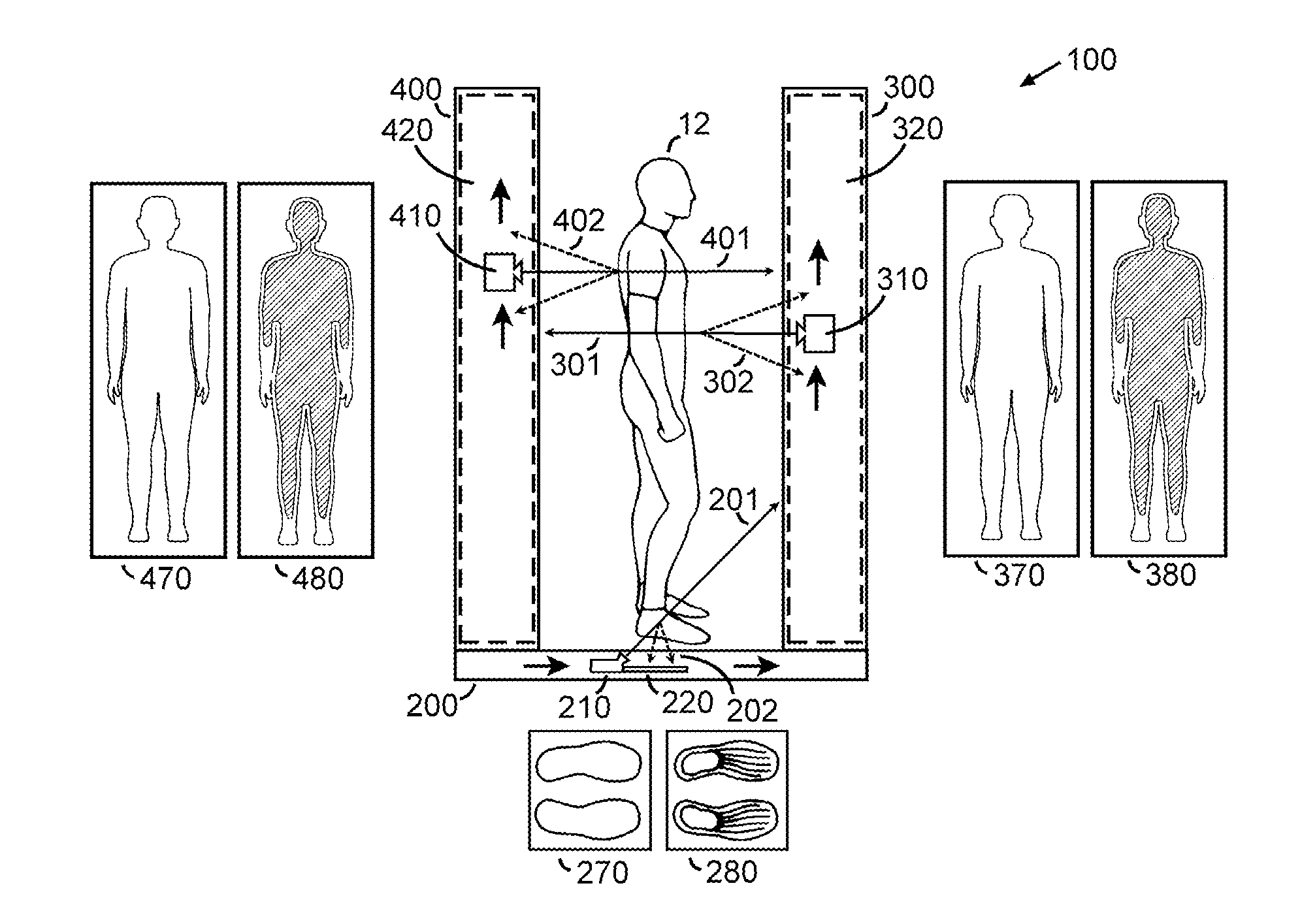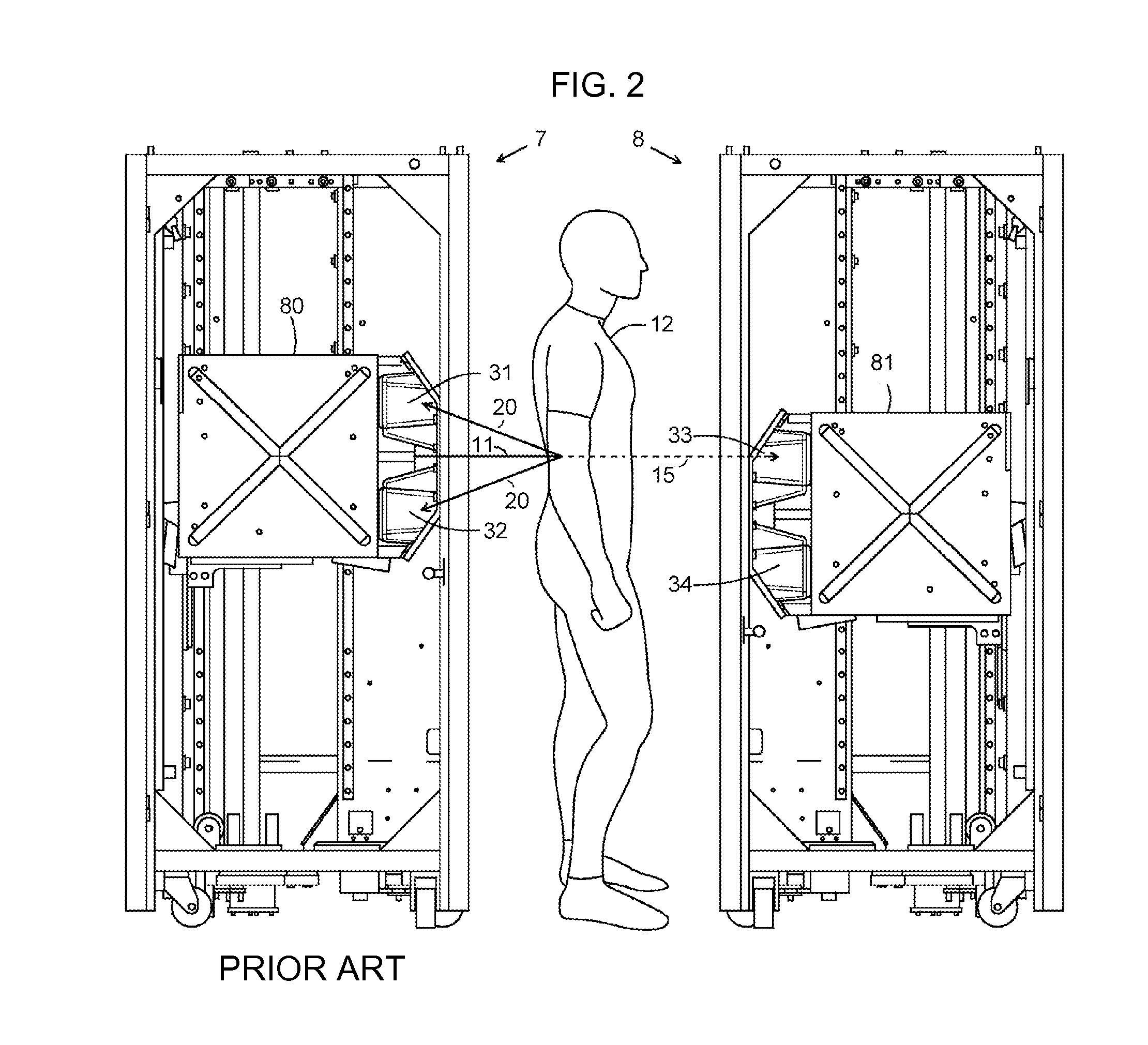Body Scanner With Improved X-ray Transmission Imaging
a scanner and body technology, applied in the field of radiation energy imaging, can solve the problems of time-consuming and labor-intensive search of individuals by hand, ineffectiveness, and complex human body shape, and achieve the effects of reducing the physical size of the apparatus, eliminating blind spots, and improving digital images of the person
- Summary
- Abstract
- Description
- Claims
- Application Information
AI Technical Summary
Benefits of technology
Problems solved by technology
Method used
Image
Examples
Embodiment Construction
[0026]FIG. 3 depicts the overall physical structure of a preferred embodiment of the present Invention. The body scanner 100 generally comprises a base assembly 200 measuring approximately 60″ by 60″ by 4″; a front assembly 300 measuring approximately 13″ by 60″ by 96″ inches; and a rear assembly 400 measuring approximately 13″ by 60″ by 96″. The examined person 12 stands on the base assembly 200 centered between the front assembly 300 and the rear assembly 400. The front assembly 300 is joined with the base assembly 200 by front connection 309. Likewise, the rear assembly 400 is joined with the base assembly 200 by rear connection 409. The front and rear connections 309409 are preferably removable fasteners that can be connected or disconnected at will, such as bolts, clamps and tie downs known in the art. This facilitates movement of the body scanner 100 from one location to another by disassembly into three easily transported assemblies 200300400.
[0027]FIG. 4A and FIG. 4B are a m...
PUM
| Property | Measurement | Unit |
|---|---|---|
| width | aaaaa | aaaaa |
| width | aaaaa | aaaaa |
| width | aaaaa | aaaaa |
Abstract
Description
Claims
Application Information
 Login to View More
Login to View More - R&D
- Intellectual Property
- Life Sciences
- Materials
- Tech Scout
- Unparalleled Data Quality
- Higher Quality Content
- 60% Fewer Hallucinations
Browse by: Latest US Patents, China's latest patents, Technical Efficacy Thesaurus, Application Domain, Technology Topic, Popular Technical Reports.
© 2025 PatSnap. All rights reserved.Legal|Privacy policy|Modern Slavery Act Transparency Statement|Sitemap|About US| Contact US: help@patsnap.com



